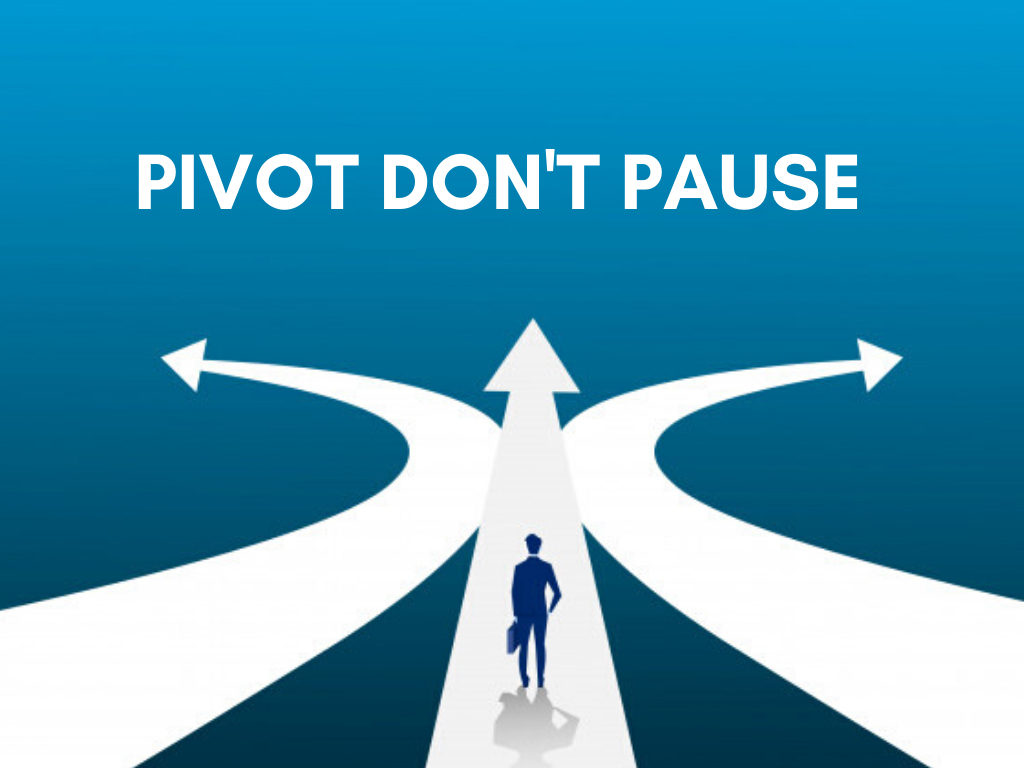The trick to success in technology is to pivot if you must. Don’t pause. Pivot.

8 August 2022 (Crete) – During my summer hiatus this year (usually 5-6 weeks) I was determined not to read about technology. I was determined to get back into the work of the great nature writer, Rachel Carson, who (rightfully so) is credited with igniting the modern environmental movement. I think once you’ve read her natural history of the oceans you’ll see how her talent made her a trustworthy translator of scientific concepts – writing in rich, literary prose. Carson’s writings not only shaped public understandings of ocean ecology, but also spurred a public passion for all things oceanographic, best embodied in a wave of “Carsonalia” – consumer items and experiences ranging from hats, to Book of the Month Club editions, to even liner notes for the NBC Symphony’s recording of Debussy’s “La Mer”.
But in a private essay, soon to be published, she notes that the “sense of wonder” that was critical to her ecological aesthetic was the fact that “new technologies have allowed military and scientific researchers to see deeper into the oceanic depths than ever before, how images of the open ocean would be domesticated through consumer markets into viewable, readable, and even wearable forms”.
Yep. I was back to tech. This “commodification of the ocean”, and of Carson’s ecocentric message, both enabled and frustrated her attempts to promote ecological literacy. Yet they also reveal much about our contemporary relationship to the world’s oceans, which remain sites of both enduring wonder and extraordinary exploitation.
But it was not just Rachel Carson’s work. I was also pulled back into tech because I am assisting my team in their coverage of the Mykonos technology “unconference” which has been in hiatus for a few years. And things like Craig Ball’s brilliant review of where we are in the Alex Jones cesspool which I covered here.
Oh, and it’s a summer of tech pivots.
Remember Clubhouse? A huge cultural moment within tech for about three weeks in early 2020, and then we all wondered what went wrong? There were a lot of reasons it failed, why we lost perspective and I covered them in a blog post here.
Well, surprise, surprise … they’re planning to pivot, to break Clubhouse into separate shards, to build new approaches to discovery: this was certainly part of the problem (which Twitter tried to solve by cloning the concept into its existing graph, but with limited success as far as I can see). But I remember time zones being an equally big issue (very hard to get a casual call going between EST, PST and Europe) and the form itself was *hard* – somehow conversations kept just petering out.
My CTO, Eric De Grasse, is in one of the Betas and he said the approach is interesting. The Clubhouse founders learned it’s more than one community. That’s way too big. Not everyone wants to talk about the same things. People have different styles and ways of coming together. And the right rooms are hard to find. A single community just doesn’t work beyond a certain size. They learned that small size and density of connections leads to a great experience – and crazy word-of-mouth growth.
NOTE: one thing I noted last year. They tried to limit signups by requiring an existing member to invite you, but that perversely made people want to join more – and flooded the hallway with 100s of less relevant rooms. They broke a major rule of social media engagement: noise causes churn. Somehow, millions did make it through the madness, some found “their people”, and that formed the core of the discrete communities they are building today: big thinkers, amazing writers, scientists, musicians, etc.
But communities need to be able to undergo mitosis as they grow — so they can split into new ones and the intimacy can scale. That’s exactly how music spawns. It’s why classrooms max out at a certain size, and why people form smaller circles when a house party grows.
I’d be really surprised if this doesn’t come back in some form, from someone. Not necessarily the Clubhouse founders. People forget that there were a dozen attempts at short-term video before TikTok clicked.
And these pivots are happening all over.
Back in the mid 2010s, the smartphone wars produced a dividend of dozens or hundreds of new companies, creating new kinds of smart connected devices. Smart phones were selling a billion units a year and most of the components were commodities that anyone could buy. You could get very small, cheap, low power Wi-Fi chips, CPUs, cameras, sensors and batteries instead of having to use PC components. There was a whole new(ish) ecosystem of contract manufactures who would help you do the design as well. The smartphones themselves could act as a much better UI than a PC. And you could sell your device online instead of putting it in stores. So, we had a Cambrian explosion of devices.
But today, very few of those companies are left, and those that are mostly either got bought (or rescued) … or pivoted to enterprise where the real money was. Some of this is just the natural order of things (most startups fail) but there are a bunch of other reasons why you could say that we’re now now in a “smart home” or IoT winter.
The obvious one is the old saying that “hardware is hard”. The factors laid out above make it very easy to make one device … but it’s a lot harder to make 250,000, on time for Christmas, delivered at the right price, gross margin and failure rate and without running out of cash on the way. The joke in venture capital is when looking at a hardware startup “you often have a great product – but let’s wait for the recap”. Remember Juicero’s vision of “a Nespresso for fruit juice”? It might or might not have been a good idea, but apparently it went to market at double the price in the plan.
Next, the fact that you’re using commodity components and outsourcing manufacturing means that anyone else can make it too, not just you. Every year at the CES trade show in Las Vegas you’ll see some new startups with some cool new idea … and 50 Chinese companies in another hall making the same thing. The startup would talk a lot about “the software experience”, and “network effects”, but those are pretty rare in practice. The software experience is generally pretty thin, and needs to be very specific. Ring doorbell cameras might have a network effect – but smart door locks do not.
So you see a pivot to what is really possible. This is why I keep hammering on the simple concept that success is often either (1) to the supply chain itself making a low-margin commodity product and selling it direct instead of rebadging it for you (eg IP cameras), or (2) to people with the right route to market. Axon won a huge chunk of the police body-camera market. Why? Because it made the Taser already, and had both the right route to market and the right way to package the underlying tech. Or “smart locks”. Why did the tech whizz kids fail, with their stand-alone approach, with their mumbo jumbo of “software layers” and “network effects”? Wrong route. They had to pivot. Smart locks were finally won by the traditional locks companies, because the range of SKUs and distribution were more important than a pretty simple software layer with no network effect.
In the above examples there has been huge consumer adoption. But other markers not so much. My two best examples: 3D printing and drones are talked about everywhere, but neither has found any mass-market consumer use case so far. But that may be changing. Why? Once again – the place where much of this always works. The enterprise. Yeah, we all bought a drone for Christmas a couple of years ago … and three days later we said “okay, I’ve seen the roof of my house now” and put it in a closet.
Oh, it does have some good, real applications. Like media production. Like us. We used our drone in our opening shot to this video:
A bigger use has been by architectural and construction companies. Again, the pivot to enterprise. No, it is not IoT: it’s simply a drone, and a camera, connected to a network. Or look at the huge range of industrial use cases where connecting devices and adding sensors – first used at the consumer level – now saves time and money, or solves problems in completely new ways (this is also powering a lot of private industrial 4G and 5G networks).
So what you have is a wave of experimentation sitting on top of some pretty simple underlying building blocks. I recently saw a documentary on the popular chef Julia Child and it touched upon kitchen tech, gadgets in the 1950s and 1960s and 1970s. We had heating elements and motors and simple sensors, and you could combine them in 50 different ways. So which ones did consumers end up keeping? In the end, everyone has a kettle and a toaster or a rice cooker – but not too many people had an electric carving knife. Today, pretty much everyone has a connected TV and/or speaker. Your next oven will probably be able to smell burning, and preheat on a voice command. But your dishwasher. Does it need to be “smart”/? To do … what?
A lot of this stuff (too much?) breaks out from the hobbyist case, and most of the time a big tech platform buys it. And in many cases that exactly why the company buys it because the hobbyist gets stuck and is not sure how to sell it.
While pivoting a business can breathe new life into an otherwise failing business, it also means you may need to start from scratch. Many “smart” startups focus on building their user base first and then determine how they can best monetize that base. For example, Slack started as a gaming company called Tiny Spec, and its team communication app was developed for internal use. The company soon realized its app could be useful for other businesses, and that’s how it pivoted to become one of the most popular team collaboration tools.
But looking at the history of these pivots you see that the successful ones change the direction of a business pretty quickly when they realize the current products or services aren’t meeting the needs of the market. Or, like Slack, see that one feature or service has traction in a different application.
And successful companies constantly analyze what their competitors are doing, and see how/if they pivot.
One of the biggest pivots today is consumer AI to enterprise AI, really in its infancy. Consumer AI is already at the center of the digital transformation revolution that’s reshaping the consumer landscape in the coming decade. And, no, not every innovation is going hit the jackpot. Voice commerce via Alexa was very slow to take off, and Web and e-commerce took 15+ years before they demolished brick-and-mortar retail models. But digital by default is the new retail model.
But many companies said “Hold on! Let’s not waste our time on the consumer!” And so the pivot to enterprise. We are in the very early days in industrializing AI (it will eventually dwarf consumer AI) because the learning curve for companies attempting to get on the innovation curve is pretty steep as its combination of many math and statistical techniques, deep learning methods (e.g., convolutional neural networks), data engineering, machine vision and supervised and unsupervised learning/training models.
And that really needs a separate post but not today.
